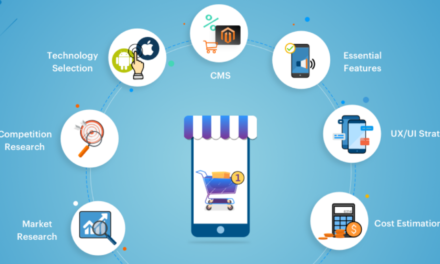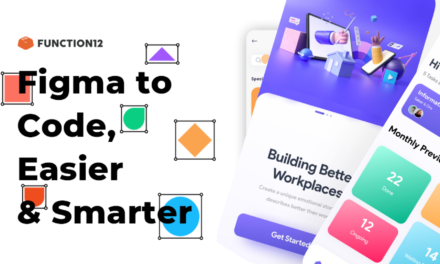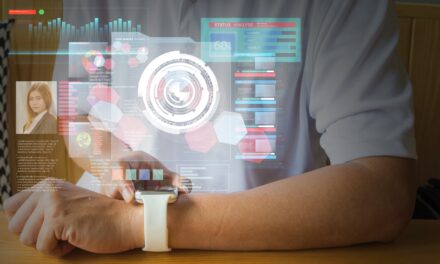We chatted with industry professionals about the changes this year, and they had a lot to say. So, let’s take a look at the top ecommerce trends and see where they’re going.
1. AUGMENTED REALITY MAKES ONLINE BUYING MORE REALISTIC
Augmented reality (AR) has completely transformed ecommerce. With this technology, customers can really see the thing they’re looking at, which aids in their purchasing choice. AR has a significant impact on the purchasing experience in some areas, such as fashion and home design, since customers may obtain a better sense of the item without seeing it in person.
Gartner forecasted in 2019 that 100 million people will use AR to purchase by 2020, so it will be fascinating to watch how that plays out in the coming years.
2. THE USE OF VOICE SEARCH WILL INCREASE
Not only are smart speakers becoming more popular, but consumers are now relying on voice assistants to do everyday activities. According to Loop Ventures, by 2025, 75% of US homes will possess a smart speaker.
As more smart speakers are installed in homes, more customers will use voice search to buy online, order meals, and plan their life. In terms of keywords and content, the advent of voice search presents an opportunity for ecommerce firms.
3. AI ASSISTS RETAILERS IN LEARNING ABOUT THEIR CUSTOMERS
Customers may enjoy automated, individualized purchasing experiences thanks to artificial intelligence (AI) and machine learning. AI is always gathering data on how customers shop, when they make purchases, and what they want in a product or service. It is a piece of technology that cannot be recreated in-store.
4. ON-SITE CUSTOMIZATION MAKES USE OF SUCH DATA TO BUILD CUSTOMIZED EXPERIENCES
Buyers of all types, including B2C and B2B, are searching for individualized, customized online purchasing experiences. The data acquired by AI is what allows a buyer to get individualized product suggestions and thorough customer support.
Implementing tailored experiences on-site or in marketing activities has been demonstrated to have a significant impact on revenue, with one research revealing that shops adopting sophisticated personalization capabilities saw a 25% revenue bump.
In addition, this accounted for 19% of participating firms, while retailers “building basic personalization capabilities” generated “a revenue lift of 10% or more; retailers in this tier account for 40% of participating companies.”
5. BIG DATA HELPS TO CREATE CUSTOMISED EXPERIENCES.
Many customers are now aware that ecommerce sites gather personal information about them, putting them at danger. As a result, experts have conflicting views on the advantages of big data and how it impacts the customized purchasing experience.
6. CHATBOTS ENHANCE BUYING EXPERIENCES.
Chatbots communicate with online consumers in the same way that a sales representative would. Today’s buyer expects to be able to discover and purchase a product with just a few clicks, and they get upset if they can’t. This is where a chatbot can help salvage the deal.
Experts believe that by 2025, 80% of organizations will be utilizing chatbots.
7. MOBILE PURCHASING IS STILL EVOLVING
Customers may make purchases from anywhere via mobile shopping, which is essential in today’s environment. However, if your ecommerce site is not mobile or web app responsive, you will be losing out on significant prospects. Mobile shoppers desire the extra convenience of being able to pay online.
According to Statista, 73% of ecommerce purchases will take place on a mobile device by the end of 2021.
8. MORE PAYMENT OPTIONS.
Customers have different payment demands, but if they can’t pay as they want on your ecommerce website, they may cancel a possible transaction. Offering a number of payment options is an excellent method to boost mobile conversion rates. Furthermore, if clients can store their payment information on your website, they will be able to check out quicker the next time they make a purchase.
9. API-DRIVEN AND HEADLESS ECOMMERCE ENABLE ONGOING INNOVATION
Headless commerce is a technology that enables the e commerce infrastructure of an online business to be totally disconnected from the frontend display layer.
Because of its flexibility on the backend, as well as the increased SEO, content marketing, and digital experience capabilities, more ecommerce organizations are using headless.
10. CUSTOMERS REACT TO VIDEO
Currently, video is a terrific method to engage consumers, and it’s not going away anytime soon. Creating videos for your website is an excellent approach to immediately capture and engage a consumer while also informing them about your product or service.
11. SUBSCRIPTIONS KEEP CONSUMERS RETURNING
Subscriptions of various kinds are available these days, and their ease is appealing to customers. Subscription services enable businesses to prepare for inventory and sales that are already locked in.
12. SUSTAINABILITY IS BECOMING MORE ESSENTIAL
Consumers and companies alike are becoming more environmentally conscious. As a result, customers are becoming more sensitive about where they purchase, the influence it has on the environment, and the consequences.
According to one poll, 50% of respondents desired greater sustainability in the fashion business, while 75% wanted less packaging.
Many firms are becoming more environmentally conscious by going paperless wherever feasible, utilizing biodegradable packaging, and employing recyclable materials.
13. COMPANIES SHOULD ENHANCE THEIR DIGITAL APPROACH FOR CONVERSION
Getting prospective clients to your website is one thing; getting them to convert is quite another. Businesses want to boost their conversion rates by improving their product pages. Multi-channel selling is another technique to increase conversions, whether via Facebook advertising or Google shopping advertisements.
14. BUSINESS-TO-BUSINESS IS EVOLVING…AND CHANGING
If you were concerned that B2B will go out of vogue, don’t be. According to Statista, global retail ecommerce sales for B2B are predicted to exceed $1.1 trillion in coming years.
According to Forrester, in coming years, over half of all people will be Millennials, implying an increase in Millennial B2B purchasers. Both of these groups want to be able to readily investigate their requirements and relevant items without having to speak with salesmen.





